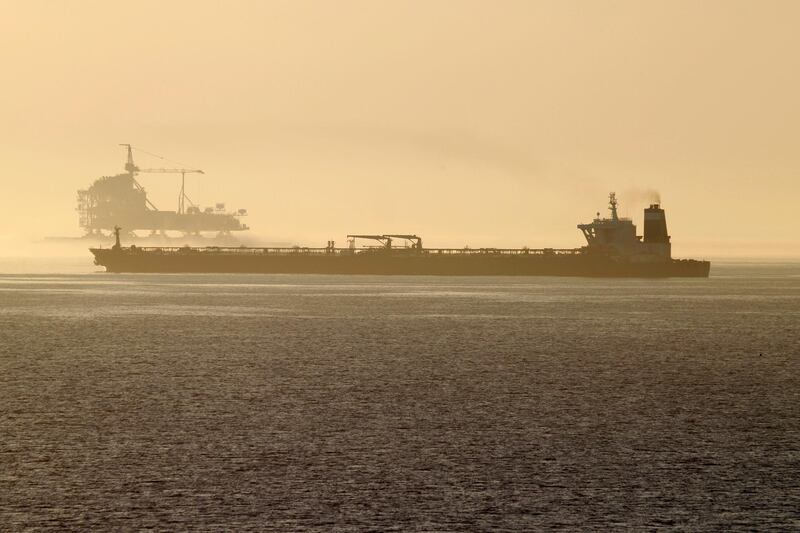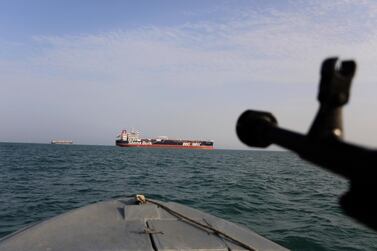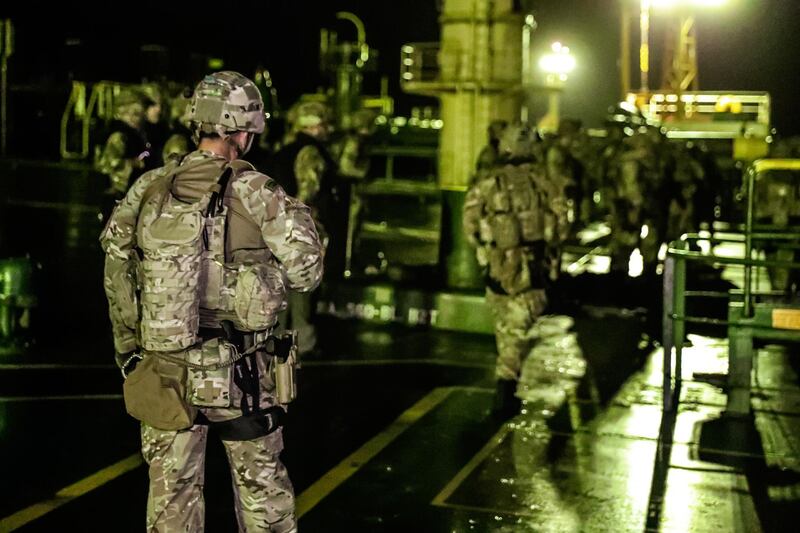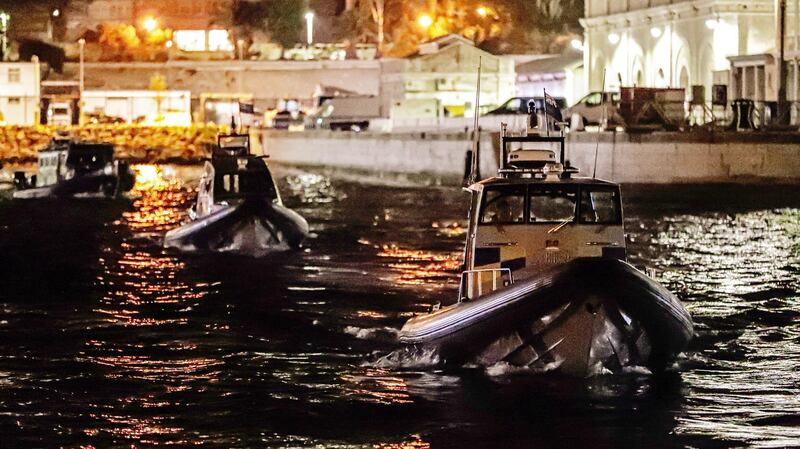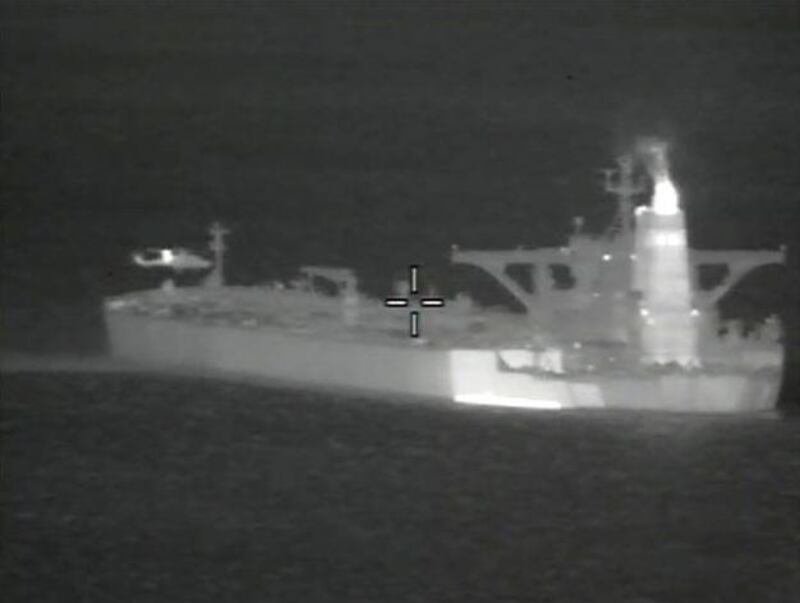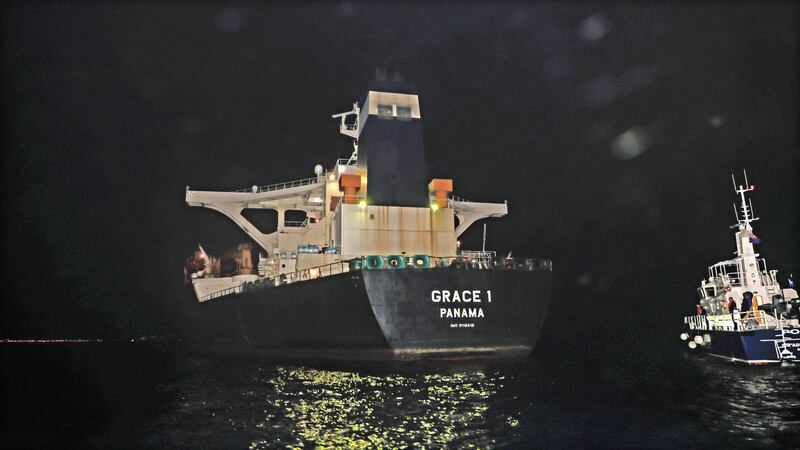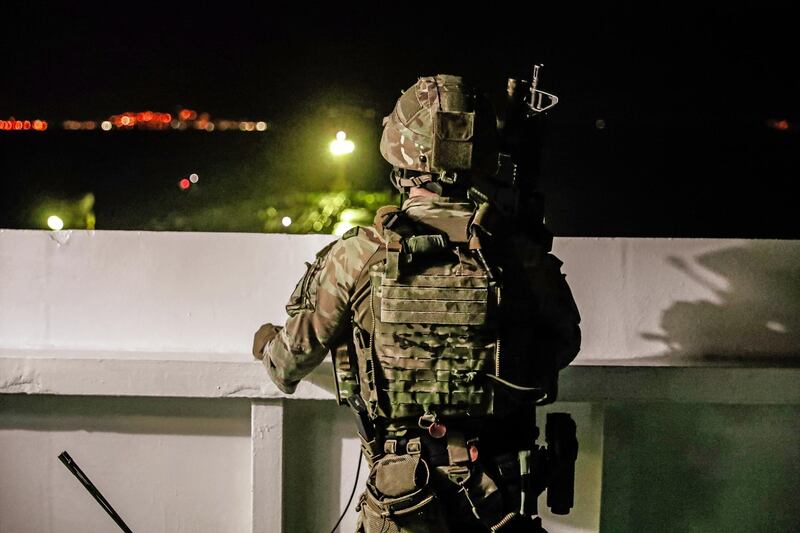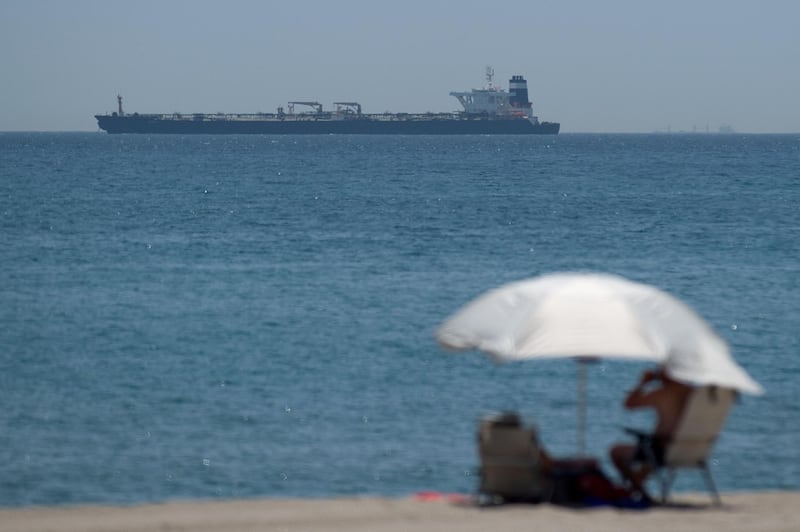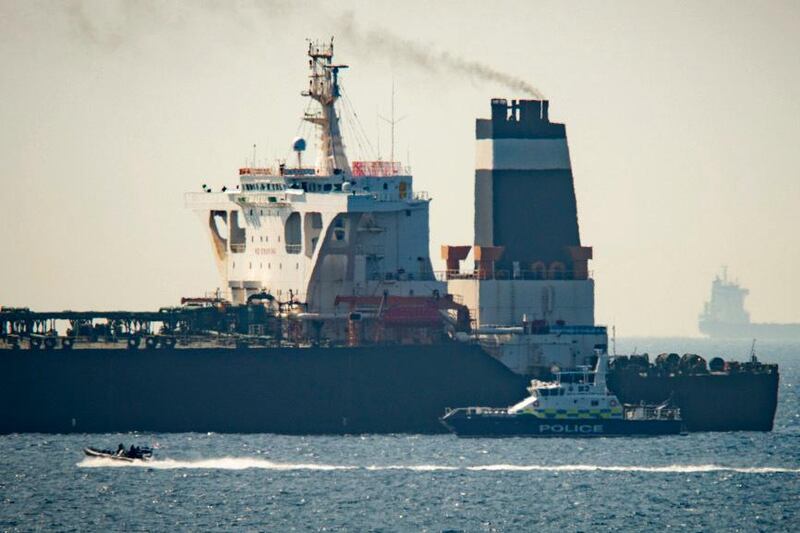A kaleidoscope of front companies in Lebanon has been buying and selling oil tankers in a bid to secretly transfer oil from Iran to Syria, in defiance of US sanctions, it can be revealed today.
The uncovered tankers were involved in offloading the oil from the infamous Grace 1, which was briefly impounded by the UK in July on suspicion of breaking European sanctions brought against Damascus because of the ongoing bloody civil war.
Gibraltar released the ship on August 15 after receiving written assurances from Iran that it would not discharge its cargo of around 2 million barrels of oil in Syria. At the time, the ship changed its name to the Adrian Darya 1 and took on a new crew.
But the ship sailed east from Gibraltar, close to the coast of Syria where the British and American authorities say it began offloading its cargo.
The National today exposes the process the Adrian Darya 1 used to offload its cargo and some of the companies involved in the sanction-skirting activity.
Starting in early October a tanker called Jasmine conducted ship-to-ship transfers off the coast of Syria with the Adrian Darya 1.
Following its ship-to-ship transfers with Adrian Darya 1, according to US-based company TankerTrackers.com, the Jasmine delivered the crude via a submarine pipeline leading to the Baniyas refinery.
TankerTrackers.com co-founder Samir Madani explained to The National that the Adrian Darya 1 was too heavily laden and therefore too deep to approach the shallow delivery point itself.

Iran regularly uses "ghost ships" – tankers that have turned off their location transponders to obscure their movements – to carry out ship-to-ship transfers of oil in a bid to evade mounting US sanctions on both Iran and Syria. In August, The National revealed how the Jasmine, a ship on a US-watchlist for shipping petroleum to Syria, was acquired by Africo 1 (Off-Shore) SAL.
The company itself changed ownership just before acquiring the Jasmine and the new shareholders of Africo 1 (Off-Shore) SAL also became the owners of a second company called Sandro Overseas (Off Shore) SAL. This firm then acquired the Sandro, yet another tanker that later engaged in ship-to-ship transfers of Iranian oil.
The moves represent another attempt to avoid sanctions. Tankers used by Iran have been shuffled under the ownership and management of numerous front companies across the world, including in Lebanon.
Weeks after The National's August report, the US Department of the Treasury sanctioned Africo 1 (Off-Shore) SAL, saying it was operating the Jasmine on behalf of a "large shipping network that is directed by and financially supports the Islamic Revolutionary Guard Corps-Quds Force (IRGC-QF) and its terrorist proxy Hezbollah."
The US Treasury, in its September 4 press release, said that the IRGC-QF has been using “several front companies to mask its role in selling the crude oil, condensate, and gas oil,” adding that Hezbollah officials were overseeing the operations of these firms.
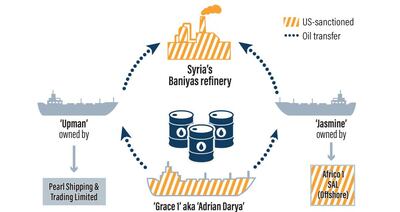
According to the US, Lebanese national Ali Qasir “serves as a linchpin” for the scheme to move oil to Syria and “assigns vessels to conduct shipments for the network based on the IRGC-QF’s guidance.”
But today's revelations show that US sanctions have not put an end to the Jasmine's activities, as the shipping of the Adrian Darya 1's cargo in October indicates.
TankerTrackers.com has established this by using satellite imagery and maritime data to closely track Iranian petroleum deliveries to Syria even when vessels have turned off their transponders to try and avoid detection.
__________
A look back at when Grace 1 was seized
The Jasmine was not alone in helping move oil off the Adrian Darya 1. TankerTrackers.com noted that another vessel, the Upman, took turns with the Jasmine to receive oil from the Adrian Darya 1 via ship-to-ship transfers and then deliver the cargo in 300-340,000 barrel parcels to Baniyas.
The Upman, which is also on a US government watchlist, is owned and managed by Pearl Shipping & Trading Limited, a Liberian-domiciled firm listing an address in central Beirut.
The National visited the site of Pearl Shipping & Trading Limited's office, provided in maritime registration data, but nobody from the firm was present at the time.
But the corporate activities of Pearl Shipping and Trading Limited as well as Africo 1 (Off-Shore) SAL show striking similarities with a third company operating from Beirut.
In mid-September, Lebanon-based Meamed International SAL Offshore became the registered owner and commercial manager of the Romina, two weeks after the tanker was renamed and reflagged under Iran, according to the International Maritime Organization and Equasis maritime data.
The Romina is on the radar of the US government for its illicit activities. On March 25, the US Treasury included the vessel on a list of tankers that have carried out ship-to-ship transfers of petroleum destined for Syria. It stopped short of sanctioning the vessel, which was then named Marshal Z.
Since being acquired by Meamed International SAL Offshore, the Romina has moved through the Strait of Malacca toward Oman. Despite its new Iranian flag, the Romina has continued to broadcast its previous Maritime Mobile Service Identity number, which identifies the crude oil tanker as being Panama-flagged under its old name.
Panama's Maritime Authority did not respond to The National regarding the discrepancy.
In March, Meamed International SAL Offshore was acquired by three new owners, Mohammed al Madani, Fayez al Kakoun and Rabih Alam, according to Lebanese corporate documents obtained by The National. The firm's previous shareholders did not respond for comment while the current shareholders could not be reached.
